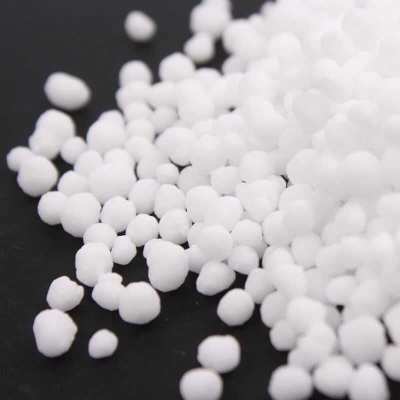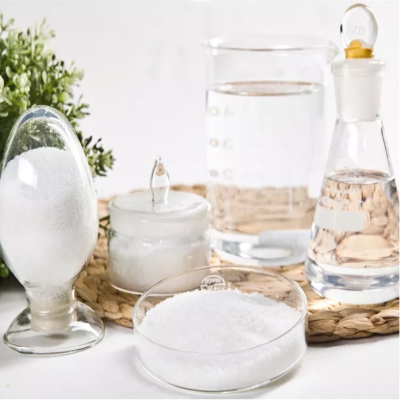-
Categories
-
Pharmaceutical Intermediates
-
Active Pharmaceutical Ingredients
-
Food Additives
- Industrial Coatings
- Agrochemicals
- Dyes and Pigments
- Surfactant
- Flavors and Fragrances
- Chemical Reagents
- Catalyst and Auxiliary
- Natural Products
- Inorganic Chemistry
-
Organic Chemistry
-
Biochemical Engineering
- Analytical Chemistry
- Cosmetic Ingredient
-
Pharmaceutical Intermediates
Promotion
ECHEMI Mall
Wholesale
Weekly Price
Exhibition
News
-
Trade Service
The rapid development of information and Internet of Things technology has spawned a demand for flexibility in electronic systems
.
Touch screen is a very popular human-computer interaction medium, and the most critical material is transparent conductive film
.
Traditional touch screens are prepared on the basis of indium tin oxide (ITO) transparent conductive films, which are hard, fragile, cannot be bent and folded, cannot conformally fit to curved surfaces or human bodies, and cannot be self-repaired after being broken
.
Designing flexible transparent conductive materials with self-healing and reversible adhesion functions, combined with position sensing technology, making flexible touch screens, and realizing the application of sticking to any curved surface or wearing on the human body is an urgent need in the field of flexible electronics
.
Hydrogel is a water-containing polymer network material with a two-continuous phase structure, in which the polymer network gives it flexible solid properties, and water and dissolved mobile ions give it ionic conductivity
.
How to design the molecular and network structure so that the ion conductive hydrogel has high light transmittance, good mechanics, self-repair and adhesion properties, and build a high-resolution touch screen on this basis, has important scientific significance and use value
.
? Based on recent research foundations in the molecular design of polymer hydrogels and applications in the fields of shape memory, intelligent drive, and flexible sensing (dv Funct Mater, 2018, 28, 1704568; ACS Sensor, 2018, 3, 2394; Adv Sci, 2019, 6, 1801584; Sci China Mater, 2019, 62, 831; ACS Macro Lett, 2019, 8, 937; Adv Funct Mater, 2019, 1905514; Angew.
Chem.
Int.
Ed.
, 2019, 58,16243 ; Research, 2019, 2384347; Angew.
Chem.
Int.
Ed.
, 2020, 59, 19237; Angew.
Chem.
Int.
Ed.
, 2020, DOI: 10.
1002/anie.
202007885; Angew.
Chem.
Int.
Ed.
, 2020, DOI:10.
1002/anie.
202011645), the team of researcher Chen Tao from Ningbo Institute of Materials Technology and Engineering, Chinese Academy of Sciences cooperated with the team of academician Wang Zhonglin and researcher Pan Caofeng of the Institute of Nano Energy and Systems of the Chinese Academy of Sciences to develop a kind of adhesive that can be attached to any Self-healing hydrogel touch screen used for curved surface (Adv.
Mater.
, 2020, DOI: 10.
1002/adma.
202004290)
.
? Such a hydrogel is the in-situ polymerization of zwitterionic monomer (3-[[2-(methacryloxy) ethyl] in nanoclay ([Mg5.
34Li0.
66Si8O20(OH)4]Na0.
66) aqueous solution.
Base] dimethyl ammonium group] propane-1-sulfonate (DMAPS))
.
The mobile ion is Na+ (Figure 1a)
.
The non-covalent adsorption and cross-linking between the polymer/clay and the attraction of the positive and negative charge groups on the polymer molecular chain give the hydrogel a self-repairing function (Figure 1b-c)
.
The polar interaction of zwitterionic groups with skin and other adherends gives them reversible adhesion (Figure 1d-e)
.
Researchers used surface capacitive touch (SCT) technology and first constructed a 1D hydrogel touch strip (Figure 1f-g)
.
The circuit connection method is shown in Figure 1a: Connect electrodes and external resistors to both ends of the hydrogel strip, and then connect to an AC power source
.
The principle of finger positioning is as follows: When the finger touches the gel, it forms a coupling capacitor (Cfinger) with the gel.
Therefore, the current can be grounded through the finger to form a path; the gel can be regarded as a resistance (Rh), which is divided by the finger On the left and right parts, the resistance value of each part is proportional to its normalized length (x, 1-x); the left and right parts of the gel resistance are connected in parallel, and an external resistance (Re) is connected in series, and then connected to the same AC Power supply; because the voltage at both ends of the parallel circuit is equal, so when the finger moves to the right side of the gel, the voltage of the right gel decreases, and the voltage on the right external resistor increases, correspondingly, the left gel The divided voltage increases, and the voltage on the external resistor on the left decreases; thus, the value of x can be determined according to the voltage on the external resistor, that is, the position of the finger (Figure 1f-g)
.
Figure 1.
Self-healing, adhesive position sensor: (a) 1D hydrogel touch strip construction structure (b) cut-spliced hydrogel through electrostatic attraction (c) polymer chain/clay non-covalent adsorption cross Lianer Self-repair (d) Polar non-covalent interaction between the hydrogel and the skin (e) Photo of adhesion to the skin (f) The finger moves point by point on the 1D touch bar, and the V1 voltage changes with the position of the finger ( g) The change of V1 voltage before and after finger touch x=14/15? The hydrogel touch screen has good mechanical properties and transparency, the elongation at break is more than 1500%, and the average transmittance of visible light (400-800nm) 98.
8%, after being folded, rolled, twisted or stretched, it can still maintain a high degree of transparency
.
In order to provide a comfortable touch experience and delay the evaporation of water in the gel, a PDMS film can be covered on the surface of the gel
.
The hydrogel can be adhered to filter paper, glass, nitrile rubber, wood, cotton, PET, ABS, VHB tape, silicone rubber, nylon, PMMA, PS, PE and other plastics, rubber, fabrics or natural insulating materials
.
The factors that affect the firmness of adhesion include the strength of the hydrogel-substrate electrostatic, hydrogen bond, dipole, etc.
, the surface roughness of the substrate, the topological entanglement between the gel polymer chain and the substrate, and the adhesion interface The energy dissipation capacity
.
Depending on the type of substrate, the adhesive strength is 1.
941kPa, and the adhesive toughness varies between 38-18Jm-2
.
The hydrogel touch screen has fast conductivity and self-repair ability, and excellent tensile performance and self-repair efficiency (Figure 2)
.
Direct current is applied to the gel, cut off, and spliced again, and the current is restored after 21s
.
After splicing for 24 hours, the elongation at break recovered to 98%
.
The spliced gel strip still has the function of finger positioning and can be used to play computer piano games
.
Figure 2 Self-healing 1D hydrogel touch strip: (a) Stretching curve of hydrogel at different repair time; (b) Sectional stitching of hydrogel-stretched photos; (c) Before and after cutting-splicing, water The change of current on the gel; (d) (e) The 1D touch strip is cut off-the V1 voltage changes with the sliding position of the finger before and after splicing; (f) The touch strip adhered to the nylon rod is cut off-the splicing (g) the touch strip is Used to play the game piano? Further, the researchers applied the surface capacitive touch technology to the 2D hydrogel square sheet, realized the finger positioning function, and constructed the hydrogel touch screen (Figure 3); the touch screen was integrated into the computer , To achieve the text, image, and command input functions
.
Such a touch screen can be used for writing, drawing, or being worn on the arm for controlling computer games
.
Figure 3-2D hydrogel touch screen: (a) Touch screen circuit diagram and touch position (input position) (b) V1 V2 V3 V4 voltage peak corresponding to the touch position (c) Touch position calculated from the voltage value ( Output location) (d) The touch screen is integrated into the personal computer system (e) The touch screen is used for writing
.
Touch screen is a very popular human-computer interaction medium, and the most critical material is transparent conductive film
.
Traditional touch screens are prepared on the basis of indium tin oxide (ITO) transparent conductive films, which are hard, fragile, cannot be bent and folded, cannot conformally fit to curved surfaces or human bodies, and cannot be self-repaired after being broken
.
Designing flexible transparent conductive materials with self-healing and reversible adhesion functions, combined with position sensing technology, making flexible touch screens, and realizing the application of sticking to any curved surface or wearing on the human body is an urgent need in the field of flexible electronics
.
Hydrogel is a water-containing polymer network material with a two-continuous phase structure, in which the polymer network gives it flexible solid properties, and water and dissolved mobile ions give it ionic conductivity
.
How to design the molecular and network structure so that the ion conductive hydrogel has high light transmittance, good mechanics, self-repair and adhesion properties, and build a high-resolution touch screen on this basis, has important scientific significance and use value
.
? Based on recent research foundations in the molecular design of polymer hydrogels and applications in the fields of shape memory, intelligent drive, and flexible sensing (dv Funct Mater, 2018, 28, 1704568; ACS Sensor, 2018, 3, 2394; Adv Sci, 2019, 6, 1801584; Sci China Mater, 2019, 62, 831; ACS Macro Lett, 2019, 8, 937; Adv Funct Mater, 2019, 1905514; Angew.
Chem.
Int.
Ed.
, 2019, 58,16243 ; Research, 2019, 2384347; Angew.
Chem.
Int.
Ed.
, 2020, 59, 19237; Angew.
Chem.
Int.
Ed.
, 2020, DOI: 10.
1002/anie.
202007885; Angew.
Chem.
Int.
Ed.
, 2020, DOI:10.
1002/anie.
202011645), the team of researcher Chen Tao from Ningbo Institute of Materials Technology and Engineering, Chinese Academy of Sciences cooperated with the team of academician Wang Zhonglin and researcher Pan Caofeng of the Institute of Nano Energy and Systems of the Chinese Academy of Sciences to develop a kind of adhesive that can be attached to any Self-healing hydrogel touch screen used for curved surface (Adv.
Mater.
, 2020, DOI: 10.
1002/adma.
202004290)
.
? Such a hydrogel is the in-situ polymerization of zwitterionic monomer (3-[[2-(methacryloxy) ethyl] in nanoclay ([Mg5.
34Li0.
66Si8O20(OH)4]Na0.
66) aqueous solution.
Base] dimethyl ammonium group] propane-1-sulfonate (DMAPS))
.
The mobile ion is Na+ (Figure 1a)
.
The non-covalent adsorption and cross-linking between the polymer/clay and the attraction of the positive and negative charge groups on the polymer molecular chain give the hydrogel a self-repairing function (Figure 1b-c)
.
The polar interaction of zwitterionic groups with skin and other adherends gives them reversible adhesion (Figure 1d-e)
.
Researchers used surface capacitive touch (SCT) technology and first constructed a 1D hydrogel touch strip (Figure 1f-g)
.
The circuit connection method is shown in Figure 1a: Connect electrodes and external resistors to both ends of the hydrogel strip, and then connect to an AC power source
.
The principle of finger positioning is as follows: When the finger touches the gel, it forms a coupling capacitor (Cfinger) with the gel.
Therefore, the current can be grounded through the finger to form a path; the gel can be regarded as a resistance (Rh), which is divided by the finger On the left and right parts, the resistance value of each part is proportional to its normalized length (x, 1-x); the left and right parts of the gel resistance are connected in parallel, and an external resistance (Re) is connected in series, and then connected to the same AC Power supply; because the voltage at both ends of the parallel circuit is equal, so when the finger moves to the right side of the gel, the voltage of the right gel decreases, and the voltage on the right external resistor increases, correspondingly, the left gel The divided voltage increases, and the voltage on the external resistor on the left decreases; thus, the value of x can be determined according to the voltage on the external resistor, that is, the position of the finger (Figure 1f-g)
.
Figure 1.
Self-healing, adhesive position sensor: (a) 1D hydrogel touch strip construction structure (b) cut-spliced hydrogel through electrostatic attraction (c) polymer chain/clay non-covalent adsorption cross Lianer Self-repair (d) Polar non-covalent interaction between the hydrogel and the skin (e) Photo of adhesion to the skin (f) The finger moves point by point on the 1D touch bar, and the V1 voltage changes with the position of the finger ( g) The change of V1 voltage before and after finger touch x=14/15? The hydrogel touch screen has good mechanical properties and transparency, the elongation at break is more than 1500%, and the average transmittance of visible light (400-800nm) 98.
8%, after being folded, rolled, twisted or stretched, it can still maintain a high degree of transparency
.
In order to provide a comfortable touch experience and delay the evaporation of water in the gel, a PDMS film can be covered on the surface of the gel
.
The hydrogel can be adhered to filter paper, glass, nitrile rubber, wood, cotton, PET, ABS, VHB tape, silicone rubber, nylon, PMMA, PS, PE and other plastics, rubber, fabrics or natural insulating materials
.
The factors that affect the firmness of adhesion include the strength of the hydrogel-substrate electrostatic, hydrogen bond, dipole, etc.
, the surface roughness of the substrate, the topological entanglement between the gel polymer chain and the substrate, and the adhesion interface The energy dissipation capacity
.
Depending on the type of substrate, the adhesive strength is 1.
941kPa, and the adhesive toughness varies between 38-18Jm-2
.
The hydrogel touch screen has fast conductivity and self-repair ability, and excellent tensile performance and self-repair efficiency (Figure 2)
.
Direct current is applied to the gel, cut off, and spliced again, and the current is restored after 21s
.
After splicing for 24 hours, the elongation at break recovered to 98%
.
The spliced gel strip still has the function of finger positioning and can be used to play computer piano games
.
Figure 2 Self-healing 1D hydrogel touch strip: (a) Stretching curve of hydrogel at different repair time; (b) Sectional stitching of hydrogel-stretched photos; (c) Before and after cutting-splicing, water The change of current on the gel; (d) (e) The 1D touch strip is cut off-the V1 voltage changes with the sliding position of the finger before and after splicing; (f) The touch strip adhered to the nylon rod is cut off-the splicing (g) the touch strip is Used to play the game piano? Further, the researchers applied the surface capacitive touch technology to the 2D hydrogel square sheet, realized the finger positioning function, and constructed the hydrogel touch screen (Figure 3); the touch screen was integrated into the computer , To achieve the text, image, and command input functions
.
Such a touch screen can be used for writing, drawing, or being worn on the arm for controlling computer games
.
Figure 3-2D hydrogel touch screen: (a) Touch screen circuit diagram and touch position (input position) (b) V1 V2 V3 V4 voltage peak corresponding to the touch position (c) Touch position calculated from the voltage value ( Output location) (d) The touch screen is integrated into the personal computer system (e) The touch screen is used for writing







